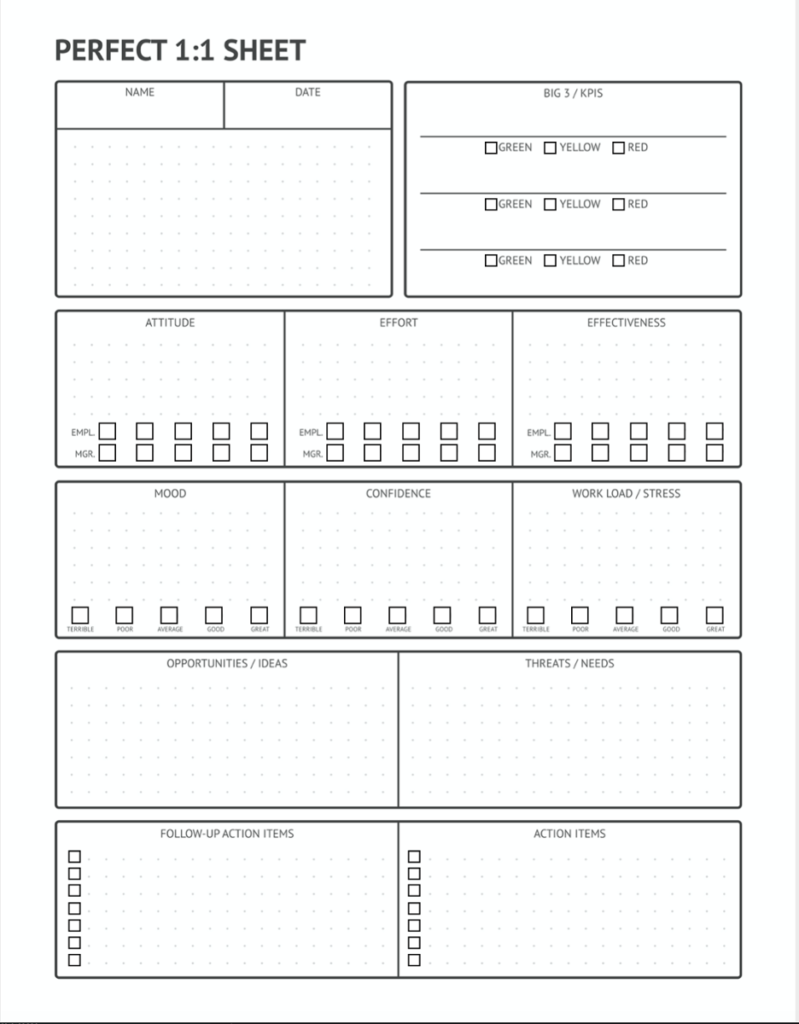There are 3 roadblocks that will ALWAYS prevent your business from success.
What’s worse is, these problems tend to rear their ugly head when life gets complicated—like, say, from a global pandemic…
The 3 scaling roadblocks are:
- Lack of Results: No doubt, you’ve experienced that feeling where you just think “You know, things should be moving faster.” You’re talking with other leaders who are seeing results, but in your business, you’re still trying to figure out why projects aren’t completed on time, or Facebook ads wont ROI.
- Misalignment: The most dangerous issue you are up against is misalignment: with compensation, expectations, projects, prioritization, and even what success looks like. These misalignments cause hiccups in production, and sometimes team members’ attitudes.
- Poor Communication: If someone does not feel heard, or does not know what’s going on, they cannot drive results. Period.
These problems wreak havoc on your company, both internally and externally.
They prevent your teams from functioning properly…
They cause your team members to feel frustrated and burnt out…
And they create an invisible barrier between your business and your goals.
So, what’s the best way to nip these problems in the butt?
Weekly one-on-one’s.
Why A One-On-One?
Right now, given the state of the world, we have to be in constant communication with our teams.
We have to over-communication and we have to make sure that everyone is on the same page.
Without that clarity, you’ll be stuck spinning your wheels, going nowhere.
That’s why at Scalable, we advocate for a cascading communication model that works across every aspect of the business. And one of the most important aspects of that communication model is the weekly one-on-one.
These one-on-ones are important because they:
- Strengthen relationships
- Keep managers in the know
- Help uncover (and prevent) issues, and
- Address growth opportunities or performance issues
Simply put, you’ll never know what’s going on in you company unless you talk to the people working in it.
So, what does a successful one-on-one look like?
How To Run A One-On-One
We’re going to go over the structure, frequency, and best practices for running your one-on-one’s.
We’ll also review the Perfect 1:1 Worksheet—a sheet you should use at every meeting to make sure you are documenting what’s discussed.
Let’s start with the easy stuff first…
How often should I have a one-on-one?
Every week.
Yup, that’s it.
Remember, constant over-communication is the goal.
What should I cover in my one-on-one?
We’ve made this easy for you! The Perfect 1:1 Worksheet has everything you need to cover.

Let’s review each section now.
The Name/Date Section
This is for housekeeping. I like to use the empty space to jot down anything that jumps out that I don’t have a place for. It’s a good place to provide context into how your team member is feeling, and what viewpoint they are seeing through.
For example, If I know my team member is having a really hard time personally, or there’s a big life event going on, ill jot it down in this section.
You want to note these things because they will help inform why someone is giving the responses they are, and just help give you insight into how your team member is doing.
Questions to ask in this section include:
“What’s on your mind?”
“What’s going on in your world?”
“How was last week?”
“How are you feeling?”
“Are you excited about anything coming up?”
“How are you? How’s life outside work?”
The Big 3/KPIs Section
This section is all about the 3 things they’re working on right now—their top 3 priorities.
Again, we need to make sure there is alignment and clarity about the projects, and the intended results.
While it’s great to have “therapy session” talks with your teammates when they need it, you have to remember that there is a bit of a transactional relationship between you and your team.
You are their employer. So, at the end of the day, you should always be tying the conversation back to the job that needs to be done, and the expectations you have.
This is your team members time, but it needs to be based in and around the success of the role that they currently occupy.
For each of the 3 projects, you’re going to get your team to identify the projects they have, and rate them:
Green: going well,
Yellow: running behind, or
Red: There’s a problem
The rating system will help you set expectations and identify and discuss any roadblocks.
Questions to ask in this section:
“What about this week? What are your plans and priorities?”
“What were your wins last week?”
“How are your big 3 looking?”
The Attitude/Effort/Effectiveness Sections:
We’ve added this section in over the past six months and it’s had the biggest impact on improving alignment.
I believe there are only three aspects that matter when “grading” an employee on a weekly basis: attitude, effort, and effectiveness.
In this section I rate their performance over the last week on these areas, and then I asked them to rate their performance as well.
Then we talk about it—especially if those two ratings are off.
If you know you have an employee that shows up with a great attitude, puts forth a great effort and isn’t effective, it’s not a team member problem.
Usually it means there that there’s either a strategy problem, a systems problem, or a throughput problem like a lack of resources.
As you can see, by knowing these 3 aspects, you can begin to diagnose where the source of some problems may be. This is how you prevent misalignment.
Questions to ask in this section:
“How would you rate your attitude last week?”
“How would you rate your effort last week?”
“How would you rate your effectiveness last week?”
“Do you have what you need to do your job?”
“Do you need any help/tools/resources?”
The Mood/Confidence/Workload/Stress Sections:
This section is all about context. You’re looking for context and eventually, as you start to have more one-on-ones, you can start to plot the trend line.
Right, so what is their overall mood?
What is their confidence level?
And then what does their workload and their stress look like?
I ask each team member to rate each section on a scale from Terrible to Great, and then we talk about the ratings.
These identifiers are great leading and/or lagging indicators for results. So, if someone is showing up with a poor mood, or super stressed out, chances are they aren’t as successful or focused as they could be.
That means they probably aren’t finishing their Big 3’s or meeting their KPI’s.
Or worse, they are doing those things, but they’re pissed off and about to hit burnout.
So, these sections are all about looking to get ahead of some potential roadblocks, and a great opportunity to practice empathy and invest in your team’s wellbeing and happiness.
Questions to ask in this section:
“What’s your general mood?”
“How’s your confidence level?”
“How’s your workload and stress level feeling?”
“Are you happy working here?”
“What’s one thing that worked and one thing that didn’t last week?”
“Anything you want to vent about?”
The Opportunities/Ideas and Threats/Needs Sections
These sections are primarily for notes.
When you’re asking some of the questions, often a team member will come up with a great idea, and just passively say it. Or they’ll identify something that’s a threat whether they realize it or not.
So, these are areas for you to jot down notes and things that may end up as action items, or just thinks to look for.
Questions to ask in this section:
“What’s the #1 problem with our organization? Why?”
“What don’t you like about the product?”
“Is there anything we’re doing that we should stop?”
“Who’s really kicking ass at the company?”
“Who do you admire?”
“Is there anyone you’re worried about?”
The Follow-Up/Action Items Sections
As a leader, one of the more important jobs you have is to hold people accountable, right?
Well, coaching and accountability go hand in hand. That’s why each one-on-one ends with a review of the previous week’s action items, and an updated list of action items moving forward.
So, when you go and get ready to do a one-on-one, first look at last week sheets and go over those action items to make sure that they’re present for this weeks’ meeting.
These action items are critical for keeping high commitment and follow through.
It’s a big deal if someone isn’t effective and they’re not doing what they’re agreeing to do.
If that’s the case, there’s a really good conversation you need to have to ensure that team member is able to follow through on the commitments they made in one-on-ones and the accountability bullets on their job description.
Once you’ve finished talking through action items, there are a few questions I like to end every one-on-one with. These are feedback questions for you (their leader.)
These questions are sometimes hard to ask, and even harder to listen to, but they are essential to creating trust and honesty between you and your team members.
Final Questions:
“If you were me, what changes would you make?”
“Do you have any feedback for me?”
“How can I best help and support you this week?”
That’s everything we cover in a weekly one-on-one.
One-On-One Best Practices
Now that you know how to run through a one-on-one, let’s briefly cover some best practices.
1. Everyone in your company should have a one-on-one. The managers should have a weekly one-on-one with their direct reports, as well as with their leader. The executive team should be having one-on-one’s together as well. You have to model what you expect from your team.
2. Your documentation should be available for your teammate to see it if they ask. Transparency is vital to keeping one-on-ones a safe, trustworthy process. There should be no surprises or unexpected information on those sheets.
3. You have to meet every week in the beginning. Look, leadership is hard, and time consuming. But it’s worth the investment. If after a few months you have built up a relationship of trust, these meetings can become open door “office hour” type meetings. But the foundation has to be set for your team members to feel comfortable reaching out.
One-on-ones are an indispensable tool you can use to…
- get to know your team members,
- uncover opportunities for growth and problem-solving, and
- give you a very clear picture of how your business operates.
So start running your own 1 on 1’s today to stop the 3 scaling roadblocks in their tracks.


